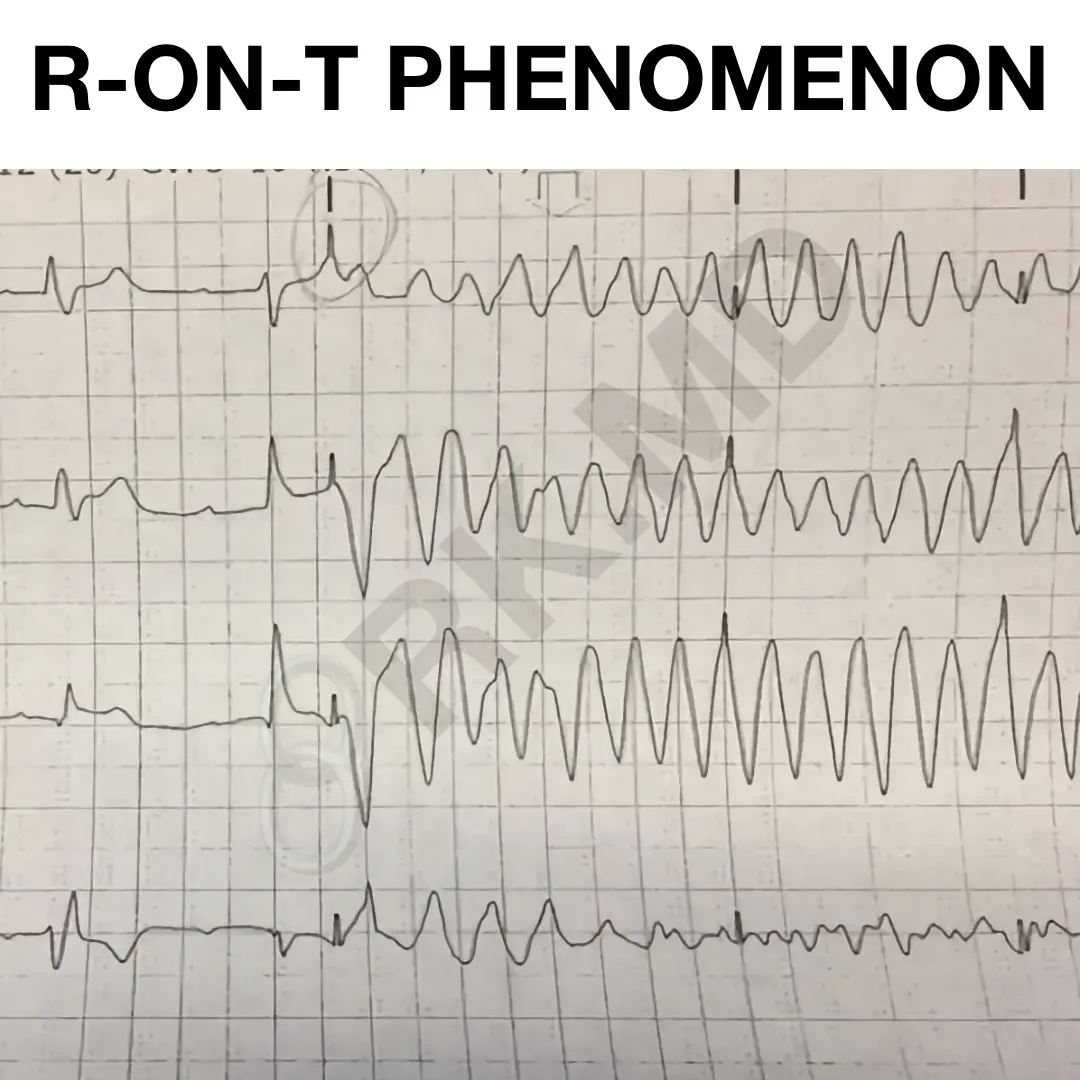The R-on-T phenomenon is a type of ventricular extrasystole that can occur when a premature ventricular contraction (PVC) happens during the relative refractory period (RRP) of the previous ventricular depolarization, specifically on the last 2/3rd of the T wave on an EKG. If the PVC is strong enough to depolarize the cardiac cells during the RRP, it can result in aberrant ventricular depolarization, triggering ventricular tachycardia or fibrillation.
Inappropriate ventricular pacing spikes can be seen on telemetry or electrocardiogram monitors after the end of the QRS complex and before the end of the T wave, and may be accompanied by a loss of perfusing rhythm. This can be seen in patients who have undergone cardiac surgery and have temporary epicardial pacemakers placed. To prevent inappropriate pacing resulting in R-on-T phenomenon, the pacemaker rate can be increased above the intrinsic heart rate, suppressing the intrinsic rhythm. Alternatively, if the patient is not dependent on ventricular pacing for a perfusing rhythm, the lead(s) can be disconnected while troubleshooting the pacemaker.
It is important to note that the likelihood of the R-on-T phenomenon occurring is influenced by the timing of the PVC relative to the cardiac cycle. If the PVC occurs during the absolute refractory period, it will not be able to initiate an R-on-T phenomenon, as the cardiac cells are completely unresponsive at this time. Conversely, if the PVC occurs during the fully repolarized state, it will not initiate an R-on-T phenomenon, as the T wave will have already resolved.
In the pictured EKG, one can appreciate ventricular fibrillation beginning after a PVC occurred on the T-wave. The management of R-on-T phenomenon depends on the underlying cause (e.g., electrolyte abnormalities or pacemaker undersensing), the severity of the arrhythmia (e.g., if sustained, ACLS management), and the presence of any comorbidities.







Is this an EKG from a patient? Was there a 2º HB there to begin with?